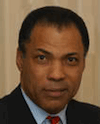
The Black Box of 401(k) Expenses
The experts--Louis Harvey of Dalbar, Mike Alfred of Brightscope, David Witz of PlanTools, Phil Chiricotti of CFDD, Jonathan Leidy, CFP, and Tussey v. ABB attorney Jerry Schlichter--talk about what the 401(k) fee disclosure rules will mean.


